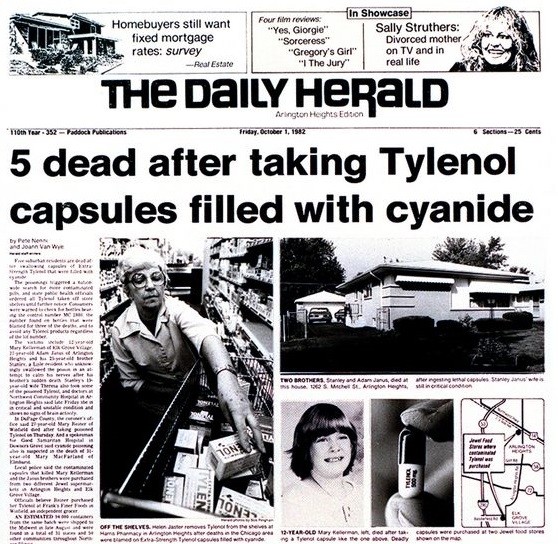When a public relations crisis hits, a company’s reputation and customer trust can take a devastating blow if not handled swiftly and adeptly. Crafting an effective crisis communications strategy is critical to mitigate reputation damage, demonstrate accountability, and rebuild public faith in the brand.
Communicating Through the Crisis
The first hours after a crisis breaks are crucial in setting the tone for the public narrative. Silence breeds suspicion, while fast, empathetic action signals accountability.
When confronting a crisis, follow these best practices:
- Act quickly. Within the first 24 hours, issue a short statement acknowledging the situation and the impact it is having. Promise a more detailed response as soon as possible and give a timeline.
- Show compassion. Without admitting legal fault, empathize with those affected and outline any efforts underway to support them. Avoid appearing callous or dismissive.
- Share known facts. Provide the public with a clear understanding of the known facts. Speculation due to lack of information only intensifies scrutiny. Facts can be updated as the situation develops.
- Communicate next steps. Outline the action plan moving forward, whether its an internal investigation, product recall, or policy change. Commit to transparency every step of the way.
- Designate a point person. Have a senior executive act as a point person for circulating company updates and fielding inquiries. This demonstrates seriousness in addressing the matter.
- Utilize multiple channels. Distribute statements via press releases, directly contacting affected parties, social media, and other available platforms.
- Own up to mistakes. If the company clearly made an error that contributed to the crisis, own up to it genuinely and apologize. The cover-up tends to cause more long-term damage than the offense.
Crafting an Impactful Apology
When a crisis involves clear culpability or negligence from the company, a well-structured apology statement is paramount. Legal teams often prefer to avoid any language that admits guilt. However, apologies that duck responsibility frequently ring hollow to the public and can deepen distrust of an organization. Effective apologies include:
- Accountability. Directly state what lapses or errors were made that contributed to the issue without deflecting fault. Explain these as specifically as possible.
- Compassion. Spotlight the people impacted and communicate genuine sympathy for hardships created by the company’s actions or negligence.
- Corrective steps. Provide granular detail around what concrete steps are being taken to rectify the current situation and ensure it will not reoccur in the future. These should extend beyond new policies to make change tangible.
- Commitment to values. Reflect on how central company values were betrayed by allowing this crisis to unfold. Provide language around values alignment moving forward.
- Restitution. Offer any compensation, credits, refunds or other restitution to immediately support affected parties. In some cases, creating a relief fund is the right approach.
- Structural change. Announce any broader leadership or governance changes to address deeper cultural elements that contributed to the crisis and failed key stakeholders. This demonstrates systemic accountability.
While crafting an admission statement focused on transparency and accountability goes against most legal advice, research reveals it provides the best path to rebuilding brand loyalty after a major fallout. When companies verbally own up to culpability and put customer interests over legal positioning, they signal authentic, compassionate values that the public believes in. The trust-building effect reaps long-term benefits that outweigh short-term defensive posturing.
Brands That Had Effective Crisis Communications
While each crisis brings nuanced challenges, brands that commit to transparency, decisive action, accountability, and values alignment in their response rebound most effectively by maintaining public trust. Here are two examples of skillful crisis management:
Johnson & Johnson – Tylenol Poisoning (1982)
When seven people were killed from cyanide-laced Tylenol capsules in the early 1980s, Johnson & Johnson responded swiftly and openly. Against the advice of legal counsel, they immediately alerted consumers across channels not to consume Tylenol products and issued a product recall costing $100 million. This happened before fully knowing the tampering details.
The company held regular press events, cooperated fully with investigators, and CEO James Burke became the face of the response. They introduced new tamper-proof, triple-seal packaging and relaunched the product just two months later, repairing brand affinity rapidly. J&J’s market share rebounded fully within a year as their compassion and candor built tremendous goodwill with the public.

Dove – Racist Facebook Ad (2017)
When Dove released a three-second GIF showing a Black woman turning white after using their soap, they faced viral backlash decrying the ad’s racist messaging. Dove offered a candid apology and immediately removed the offensive content. Beyond just deleting the GIF, they issued a promised a full audit of processes and staff training to uncover how this unacceptable content was approved in the first place.
They avoided blaming external partners, demonstrating it was Dove’s responsibility to govern their supply chain. Dove’s global leader for skin cleansing took personal ownership, further humanizing the response. The company followed through on deeper brand audits, executive reshuffling to better embed inclusive leadership, and the formation of several advisory boards to ensure greater consciousness around race and identity issues in their brand voice moving forward.

Effective Crisis Communications
Communicating quickly with compassion, candor, and accountability after an organizational crisis provides the greatest chance of rebuilding public trust in a brand. Attempts to shirk responsibility tend to erode brand affinity further. Consumers are incredibly savvy and can see through coverups and blame-placing.
While admitting guilt faces legal barriers, brands like Johnson & Johnson and Dove exemplify the effectiveness of leading with transparency first, consistent values-based messaging, and restorative action at scale. By giving customers and stakeholders a direct role in the solution, companies can turn turmoil into an opportunity for deeper dialogue and community empowerment.






